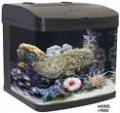
Aquarium Reviews
|
Sand Shark Aquarium Care
Aquarium Care for Sand Sharks
Sand sharks are viewed as the most timid and least aggressive of the shark species. Sand sharks are much smaller in size than other sharks and move fairly slowly. These sharks are constitute all over the Atlantic Ocean, and are the most common type of shark. Although these sharks would seem to be the entire aquarium kept fish, because of their smaller size, they are not. They still grow to reach an average roll of about five feet, and can weigh as intensely as three hundred pounds. This is really too large to keep in a home aquarium. The population of these sharks has dwindled in recent years, due to fishing activities. Therefore they are being considered for the endangered species list. It would be irresponsible to attempt to house one of these creatures, unless perfectly educated on their care needs.
Sand sharks adapt the best of all sharks to a prisoner environment. The types of aquariums that house these authentic large fish are usually public state supported aquariums. These facilities keep the resources to build large enough tanks to house the sharks. Sand sharks can be kept in a tank shadow other immense fish. The sharks are usually fed three to four times a week to discourage them from eating tank mates. For the most part this works well, although, every so often some of the fish seem to disappear. When housing sharks, care should be taken to ensure there is adequate space for swimming. Sharks by nature cruise the open waters. When visiting a public aquarium, notice sand sharks tend to be constantly moving, while some of the other fish just hang out in the tank.
A good alternative for a sand shark in a home aquarium is the catfish shark. Although labeled as a shark because of their dorsal fins, these creatures are much smaller. They ofttimes maturate to be about a foot stringy. They will still need a larger tank with plenty of go, because they intensely will have a drive nature. These fish, like true sharks will eat just about anything that will fit in their mouths. So be careful not to house it with smaller fish. The catfish shark should be kept in a tank with brackish water. Brackish water is more difficult to maintain because it is a mixture of both salt and freshwater. In the wild these fish live in areas where ocean waters meet streams or rivers. The Albemarle Moving is an example of brackish water.
The same general type of equipment is required for brackish water and saltwater aquariums as fresh water. It is a good idea to upgrade filters and heaters, however, because saltwater and brackish water fish are more sensitive to water irregularities. Sharks are apt to a darker environment, so it is not necessary to have a lot of lighting. Sand sharks have the equivalent basic care requirements as most other fish. They need, and adequate food source, regulated water and an environment that would factor similar to their natural habitat.
 |
 |
 |
How To Care For Aquarium Catfish
Fifty Five Gallon Fresh Water Aquarium
More Aquarium Articles
... gravel to remove sediment that could possibly silver the chemical make up of the tank. Use caution when cleaning an acrylic tank and be sure that the cleaning supplies being used will not harm the tank in any way. The best thing to use to remove algae is phosphate drops. When added to the water on a regular ...
... fish. Algae is a pest that will cause damage or even death of the coral. Keep the algae as controlled through possible by scheduled and proclivity cleaning of your aquarium. Bubble coral may besides get flat worms. These worms are easily spotted and usually appear as circular spots on the coral's vesicles. ...
... bottom of the tank. Next cover the filter with approximately two to three inches of gravel. Fill the tank about a third of the way full with water that has been de - chlorinated. The next step is to add any plants or decorations to the tank. Check with your retailer on the specifics for adding live plants. ...
... about two degrees of variation in water temperature It is not uncommon for the novice fish keeper to become easily discouraged. Water conditions are hard to regulate and unfortunately fish, even the freshwater variety, are not the hardiest of creatures. Sometimes they do not survive these fluctuations. ...

|
| Copyright © 2006-2012 Internet Marketing Tools, All Rights Reserved |